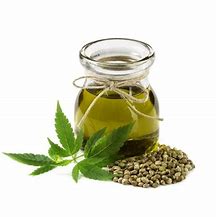Sunflower Oil





Sunflower Oil
Latin Name
Helianthus Annuus L.
Family
Asteraceae (compositae)
Etymology
Helios in the Greek work for sun and anthos means flower. Annuus from the Latin and means yearly. In France the plant is called tournesol and in Spain tornasol, both of which mean ;'that which turns toward the sun' but this has no foundation in fact and the plants do not show this behaviour, although the flowers do all face the same way - facing the morning sun in the South of France - they do not turn.
The Plant and its Environment
The originated in South America, where it was worshipped by the Aztecs as a representation of the sun; the seeds were eaten toasted or turned into meal and the plant was brought to Europe at the end of the 16th century. The major flowers today are the countries of the former Soviet Union, Eastern Europe, India, Argentina. The Mediterranean countries and the USA. It is also grown in large quantities in the South of France.
Sunflowers can grow to a height of 5 meters ( 15 feet) and the flower heads can vary from 7.5 cm (3 inches) in diameter to an impressive 35 cm (15 inches)! This tremendous growth takes place in a relatively short periodof time (the plant is an annual) and requires lots of water, so sunflowers can be used to drain soggy areas. This will grow in almost any soil as long as there is plenty of full sun and they are watered daily in dry areas.
Before collection the seeds are allowed to ripen in the flower head until black, and each head yields on average about 0.25 kg (0.5 lb) of seeds.
'High oleic' type sunflowers are also grown and here the triglycerides contain at least 80% oleic acid. The oil from these is more heat resistant than the usual 'linoleic type' sunflower oil.
The Oil
Sunflower seeds contain around 30% of oil (although some modern varieties contain 50% (Bruneton 1995) which is light and slightly sweet. Organic sunflower is often used as the macerating medium for calendula and other plants.
Method of Extraction
All oil extracted from organically grown plants is obtained by cold pressing. The oil obtaind from non-organically grown plants is obtained by cold pressing. The oil obtained from non-organically grown plants and sold commercially in large quantities is produced by solvent-based refining.
Principal Constituents
| Type | Based on | Content - % |
| Saturated fatty acid units | ||
| C14:0 | myristic acid | 0.5 |
| C16:0 | palmitic acid | 1-10 |
| C20:0 | arachidic | 0-1.5 |
| C22:0 | behenic acid | 0-1 |
| C24:0 | lignoceric acid | <0.5 |
| Typical saturated fatty acid unit content | 12 | |
| Monounsaturated fatty acid units | ||
| C16:1 | palmitoleic acid | <1 |
| C18:1 | oleic acid | 14-35 (high) 78-83% |
| C20:1 | eicosenoic | <0.5 |
| C22:1 | erucic acid | <0.3 |
| Typical monounsaturated fatty acid unit content | 24 | |
| Polyunsaturated fatty acid units | ||
| C18:2 | linoleic acid | 64 (55-70)* |
| C18:3 | alpha-linolenic acid | <0.3 |
| Typical polyunsaturated fatty acid unit content | 64 |
The value increases with cooler growing conditions
Reference: Carrier Oils For Aromatherapy & Massage: Len Price with Ian Smith & Shirley Price
Articles-Most Read
- Home
- Contact Us
- Coconut Oil-2
- Absorption Ratings for Carrier Oils
- Cold Pressing Method
- What are Essential Fatty Acids
- Cherry Kernel Oil
- Fixed Oils and Skin Penetration
- Hempseed Oil
- Almond Oil
- Cocoa butter
- Camelina Oil
- Antibacterial Effects Of Carrier Oil
- Coconut Oil
- Lime Blossom Oil (macerated)
- Carrot Oil, Wild Carrot Oil (macerated)
- Apricot Kernel Oil
- Kukui Nut Oil
- Jojoba Wax
- Pumkin Seed Oil - Cucurbita maxima, C. pepo
- Passion Flower OIl (Macerated)
- Hydrocotyle Oil (macerated)
- Palm Kernel Oil
- Rapeseed Oil - Carrier Oil
- Nutrients
Who's On Line
We have 73 guests and no members online
Articles-Latest
- How to Make Homemade Olive Oil: A Step-by-Step Guide
- 20 Evidence-Based Aloe Vera Oil Benefits For Skin, Hair & Health
- Peanut oil - Cold pressed - Are There Health Benefits? How To Make
- What Are the Health Benefits of Black Seed Oil?
- Comfrey oil Infused
- Chamomile Flowers Infused Oil
- Calendula Flowers Infused Oil
- Arnica Flowers Infused Oil
- How To Make Herb-Infused Oils
- DIY avocado oil for healthy skin
- How To Make Coconut Oil
- 8 Benefits of Mustard Oil, Plus How to Use It
- SHOREA STENOPTERA SEED BUTTER
- Shea Butter- 7 Amazing Benefits Of Shea Butter
- Monoi Oil For Hair & Skin
- Mango Seed Oil
- Cohune Oil Is The Next Big Thing
- Brazil Nut OIl
- 7 Impressive Benefits Of Allspice
- Camelina Oil Benefits, Uses, and Side Effects




